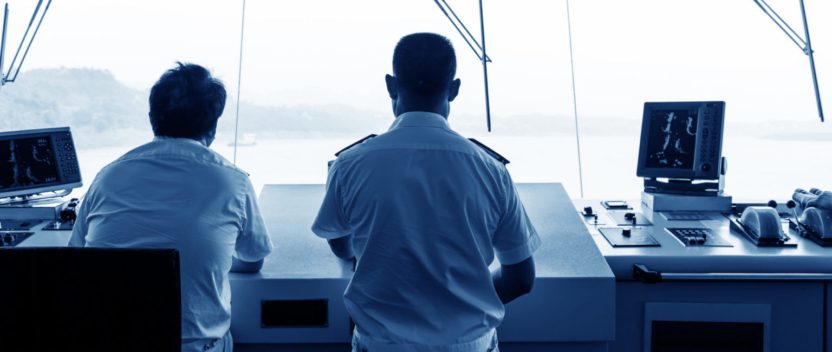Is there more to smarter shipping than more technology?
So bad have the dry bulk, offshore and container markets become that the industry seems to have accepted, if not yet fully embraced, the need for new approaches. Call this Smart Shipping, to Cyber Shipping or Shipping 2.0, it spans the new models proposed by Martin Stopford, greater use of business intelligence and the adoption of new, sometimes unproven technology.
All are subjects we have addressed in depth on Great Circle but as previous articles have pointed out, the need for better data and efficient operations is some way from a crewless vessel, market demand for which has yet to be demonstrated.
But even the smarter ships that will bridge that future have major implications for owners, operators, seafarers, flags, class and insurers, not to mention the customer who so often brings up the rear in this discussion.
Speaking at the recent CMA event, International Chamber of Shipping Secretary-General Peter Hinchliffe gave a typically measured view of what Smart Shipping could mean in practice. Less widely reported than the whizz-bang speeches heavier on paradigm shift, new business models and future visions, it was no less insightful for that.
Hinchliffe’s position is that Smart Shipping is not an end in itself but part of a toolbox of options for owners. The central issue is that after many years in which the reverse appeared true, technology is these days dominating the debate.
The primary strategy he observes, is not to change the design of ships but rather the way they are operated, shifting them from autonomous business units managed by the master to more integrated asset through better information and communications technology.
“The hypothesis is that the business model can be improved and costs reduced by enabling ICT in same way that manufacturing, logistics and aviation have done,” he said. “This could have significant consequences if one that believes these advances in technology will allow shipping companies to automate and de-skill vessel operations.”
In the view of ICS, this is not a positive development. De-skilling challenges the idea that the integration of ship and shore can be beneficial, despite its supporters believing the bringing ship and shore closer together can increase productivity as well as the attractiveness of careers in the maritime industry.
“Integration may well generate opportunities but underneath the flexibility is the need for competent seafarers with inherent knowledge and understanding of shipping. We are a practical industry operating in an unforgiving environment,” he added.
Technology can sit side by side with human resources but the risk that seafarers could become overwhelmed is very real. The greater risk that in the stampede for efficiency the industry takes a wrong turn.
“The generally held view is that shipping is slow adopter. This is a false assertion but it is important that technology is not seen as the Holy Grail. Technology has shortcomings that must be acknowledged and measured against opportunities,” he said. “We must question the long term consequences of automation on efficiency and safety and recognise the consequences on safety and the environment from de-skilling seafarers.”
Some car makers he added, are reintroducing skilled people to otherwise automated production lines because of the unique perspectives they bring.
“We should remember that many voyages are completed safely despite of the best efforts of technology to thwart the seafarers working as a trained team get the ship safely to port,” he observed.
There is both correlation and causality between the introduction of new technology and accidents and serious failures related to that technology, he suggested. The rapid pace of change makes the number and consequences of failure unpredictable and the industry should be particularly cautious about adopting technology not specifically developed for it.
Smart Shipping asks fundamental questions that will take time to answer, not least of which is how much shipping can really learn from other industries. A higher priority might be closer discussions with regulators and associated stakeholders.
It might be unclear whether a more holistic change is truly necessary to deliver the aspirations of better service, efficiency and profitability but Hinchliffe is “personally convinced that the development of international regulation and its effects needs to be much smarter”.
No-one could have overlooked the reference to the IMO Ballast Water Management Convention which was adopted before the technology necessary to implement it was tested or proven.
To Hinchliffe, Smart Shipping implies a smaller number of larger corporate shipping companies is the preferred way to move forward. But this puts the smaller owners who make up the greater part of the industry at odds with the trend unless they are forced to change.
“This needs exploring with care to extract both the good and the unnecessary,” he said. “Time will tell how shipping defines and adopts the technology and how well it avoids adopting technology just because it is available rather than because adds value.”


